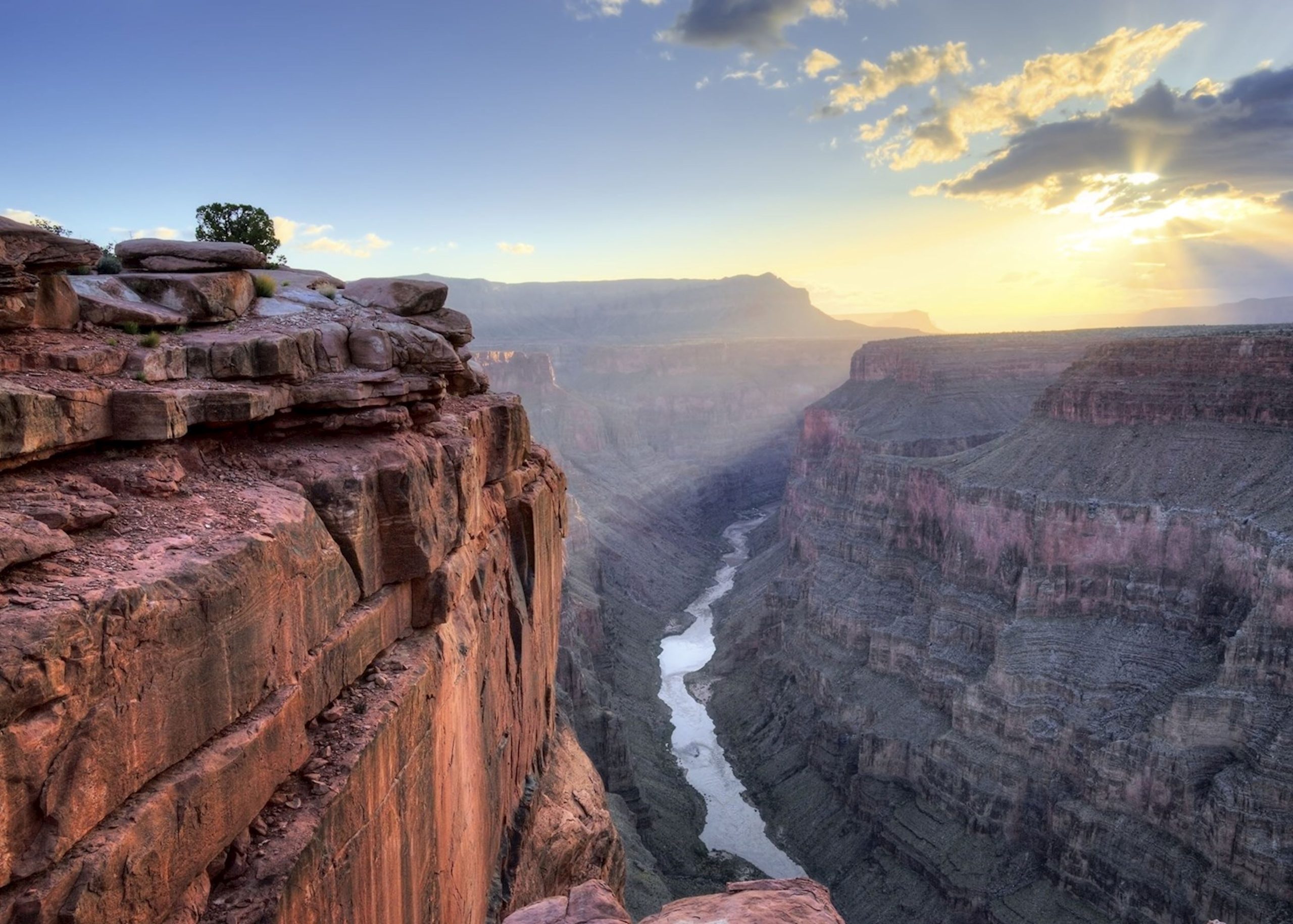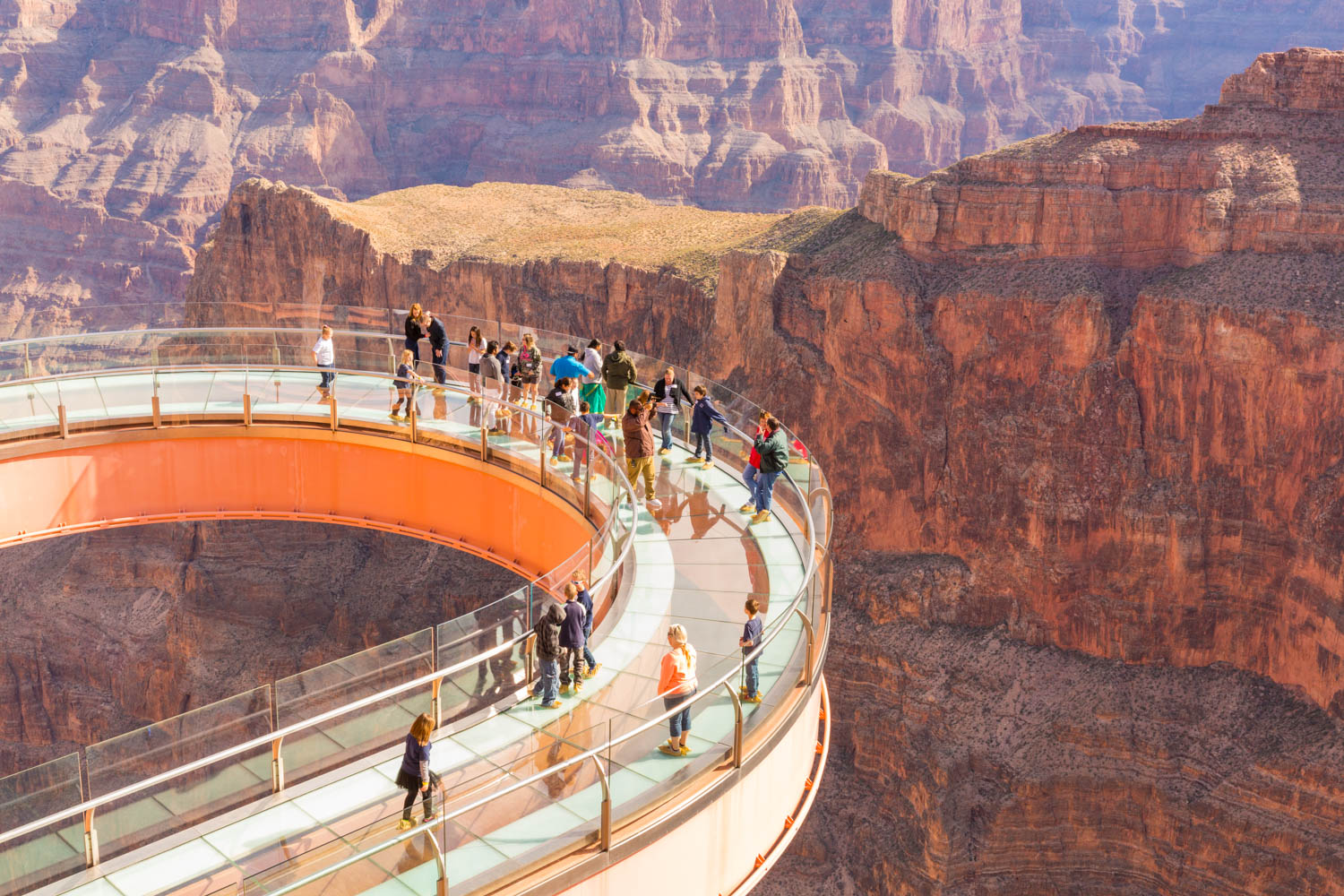
The Grand Canyon. A chasm carved over millennia by the relentless Colorado River, a testament to the power of nature, and a vista that has captivated humanity for centuries. Gazing into its vastness, a sense of awe washes over you, dwarfing all earthly concerns and connecting you to something ancient and profound. Whether you’re a seasoned adventurer or a first-time traveler, a visit to the Grand Canyon is an experience you won’t soon forget. This comprehensive guide will equip you with the knowledge you need to plan your trip, explore its wonders, and make the most of your time in this geological masterpiece.
A Glimpse into the Past: The History of the Grand Canyon
The story of the Grand Canyon is a story of slow, relentless transformation. Its formation began roughly 5 to 6 million years ago, but the rocks themselves hold secrets reaching back almost two billion years. The Colorado River, originating in the Rocky Mountains, began its patient work, eroding the layers of sedimentary rock – sandstone, limestone, shale – that had accumulated over eons. The uplift of the Colorado Plateau, a geological event that raised the land, further accelerated the river’s cutting action, deepening the canyon and exposing the vibrant layers of rock that tell tales of ancient seas, deserts, and volcanic activity.
Related Articles about Standing on the Edge of Eternity: Your Comprehensive Guide to Visiting the Grand Canyon:
- Brazil: A Tapestry of Wonders – Unveiling the Best Tourist Attractions
- Japan: An Odyssey Through Timeless Traditions and Modern Wonders
- Cebu’s Crown Jewels: A Grand Tour of its Top Hotels and the Island’s Enduring Charm
- Seoul: A Journey Through Time, Tradition, and Tomorrow
- Cairo: A Timeless Tapestry of History, Wonder, and Modernity
Long before European explorers gazed upon the canyon, the Ancestral Puebloans, or Anasazi, thrived in the region. They built dwellings and cliff houses within the canyon, leaving behind artifacts and rock art that offer glimpses into their culture and way of life. These indigenous peoples held a deep spiritual connection to the canyon, considering it a sacred place.
The first documented encounter by Europeans was in 1540 by a Spanish expedition led by Captain García López de Cárdenas. However, they were more interested in finding gold than appreciating the geological wonder, and the canyon remained largely unexplored for centuries.
It wasn’t until the 19th century that exploration and mapping of the Grand Canyon truly began. John Wesley Powell, a one-armed Civil War veteran, led the first successful river expedition through the canyon in 1869. His detailed maps and descriptions brought the canyon to the attention of the wider world, sparking a sense of wonder and igniting the desire for its preservation.
The Grand Canyon National Park was established in 1919, safeguarding its natural beauty and ensuring its legacy for generations to come. Today, the park welcomes millions of visitors each year, all eager to witness the grandeur and experience the magic of this iconic landmark.
Unveiling the Wonders: Main Attractions and Things to Do
The Grand Canyon offers a diverse range of experiences, catering to various interests and levels of adventure. Here are some of the main attractions and activities to consider:
- South Rim: This is the most popular and accessible part of the Grand Canyon, boasting stunning viewpoints and easy access to amenities.
- Mather Point: A popular viewpoint offering panoramic vistas of the canyon.
- Yavapai Geology Museum: Learn about the canyon’s geology and formation through exhibits and interactive displays.
- Grandview Point: A less crowded viewpoint with incredible views, especially at sunrise or sunset.
- Bright Angel Trail: A challenging but rewarding hiking trail that descends into the canyon, offering an immersive experience.
- South Kaibab Trail: Another popular hiking trail, known for its steepness and stunning views.
- Rim Trail: A paved, relatively flat trail that follows the rim, connecting many viewpoints and offering easy access for all abilities.
- Village Area: Explore the historic buildings, shops, restaurants, and visitor center.
- North Rim: Offering a more secluded and wild experience, the North Rim is open seasonally (mid-May to mid-October).
- Bright Angel Point: A short, paved walk with breathtaking views.
- Point Imperial: The highest point on the North Rim, offering panoramic views.
- Cape Royal: Another stunning viewpoint, offering views of Angels Window and the canyon’s eastern end.
- North Kaibab Trail: The only maintained trail that descends into the canyon from the North Rim, known for its lush vegetation.
- Hiking: Hiking is the best way to fully experience the canyon’s scale and beauty. Trails range in difficulty from easy walks along the rim to strenuous multi-day backpacking trips. Always research trail conditions, pack plenty of water and food, and be prepared for extreme temperatures.
- Mule Rides: A unique and memorable way to descend into the canyon, offered on the Bright Angel and South Kaibab trails.
- Helicopter Tours: Soar above the canyon for a breathtaking aerial perspective, offering stunning views and photo opportunities.
- River Rafting: Experience the canyon from a different angle with a guided rafting trip down the Colorado River. Trips range from day excursions to multi-day adventures.
- Stargazing: Away from city lights, the Grand Canyon offers incredible stargazing opportunities. The park hosts several stargazing events throughout the year.
- Camping: Experience the canyon under the stars by camping at one of the park’s campgrounds. Reservations are highly recommended.
- Grand Canyon Village: Explore the historic buildings and shops in this charming village, located on the South Rim.
- Desert View Drive: This scenic drive along the South Rim offers several viewpoints, including the iconic Desert View Watchtower, providing panoramic views of the canyon and the Painted Desert.
Planning Your Adventure: Travel Tips and Essentials
Before you embark on your Grand Canyon journey, careful planning is crucial for a safe and enjoyable experience:
- Book Accommodations in Advance: Especially if you’re visiting during peak season (spring and fall), book your lodging, camping permits, and tours well in advance.
- Purchase a National Park Pass: A National Park Pass provides access to all national parks and is a worthwhile investment if you plan to visit multiple parks throughout the year.
- Check Weather Conditions: The weather in the Grand Canyon can be extreme, with temperatures varying significantly depending on the time of year and elevation. Pack accordingly, with layers of clothing to adapt to changing conditions.
- Pack Essentials:
- Sunscreen, hat, and sunglasses: Protect yourself from the intense sun.
- Plenty of water: Dehydration is a serious risk, especially when hiking. Carry at least 3 liters of water per person per day.
- High-energy snacks: Pack snacks like energy bars, trail mix, and fruit to keep you fueled.
- Comfortable hiking shoes: Essential for navigating trails.
- First-aid kit: Include essentials like bandages, antiseptic wipes, and pain relievers.
- Flashlight or headlamp: For navigating trails in low-light conditions.
- Binoculars: To spot wildlife and enjoy the views.
- Camera: To capture the breathtaking scenery.
- Be Aware of Altitude Sickness: The Grand Canyon is at a high altitude. Acclimatize gradually, stay hydrated, and avoid strenuous activity upon arrival.
- Respect Wildlife: Keep a safe distance from animals and never feed them.
- Leave No Trace: Pack out everything you pack in and stay on designated trails to minimize your impact on the environment.
- Plan for Limited Cell Service: Cell service can be spotty or nonexistent in many areas of the park. Download offline maps and inform someone of your itinerary.
- Consider a Guided Tour: If you’re unfamiliar with the area or prefer a more structured experience, consider joining a guided tour.
Best Time to Visit: Timing Your Trip
The best time to visit the Grand Canyon depends on your preferences:
- Spring (March-May): Pleasant temperatures, fewer crowds than summer, and blooming wildflowers. Hiking conditions are generally favorable.
- Summer (June-August): Hot temperatures, especially in the inner canyon, and large crowds. This is a popular time for families. Be prepared for afternoon thunderstorms.
- Fall (September-November): Ideal weather conditions, with comfortable temperatures and vibrant fall foliage. Fewer crowds than summer.
- Winter (December-February): Cold temperatures, potential for snow, and limited access to certain areas, particularly the North Rim. The South Rim is open year-round, and the canyon can be stunning under a blanket of snow.
Where to Stay: Hotels and Lodging Options
- Within the Park:
- El Tovar Hotel (South Rim): The historic and iconic hotel offering luxurious accommodations and stunning views.
- Bright Angel Lodge (South Rim): Rustic lodge with historic cabins and a prime location.
- Yavapai Lodge (South Rim): Modern hotel with a variety of room options.
- Maswik Lodge (South Rim): Comfortable lodge with a range of amenities.
- Phantom Ranch (Inner Canyon): The only lodging option within the inner canyon, accessible only by foot, mule, or rafting.
- North Rim Lodge (North Rim): (Seasonal) Offers rustic cabins and stunning views.
- Outside the Park:
- Tusayan, Arizona (South Rim): The closest town to the South Rim, offering a variety of hotels and restaurants.
- Williams, Arizona (South Rim): A historic town along Route 66, offering a range of hotels and restaurants.
- Flagstaff, Arizona: A larger city with a wide variety of hotels, restaurants, and services, about 1.5-2 hours from the South Rim.
- Jacob Lake, Arizona (North Rim): Offers limited lodging options near the North Rim.
Savoring the Flavors: Local Food and Dining
The Grand Canyon area offers a variety of dining options, from casual eateries to fine dining experiences:
- El Tovar Dining Room (South Rim): Fine dining with stunning views, known for its Southwestern cuisine.
- Bright Angel Restaurant (South Rim): Casual dining with a diverse menu.
- Arizona Room (South Rim): Offers American cuisine with panoramic views.
- Fred Harvey Burger (South Rim): Quick and convenient burger joint.
- Canyon Village Market Place (South Rim): Offers a deli and grocery items for picnics.
- Restaurants in Tusayan and Williams: Offer a variety of dining options, including American, Mexican, and Italian cuisine.
Getting Around: Transportation Options
- By Car: The most common way to get to and around the Grand Canyon. Parking can be limited, especially at popular viewpoints, so arrive early.
- Free Shuttle Buses (South Rim): The park offers a free shuttle bus system that connects various viewpoints and the village area. This is the most convenient way to get around the South Rim.
- Tours: Various tour companies offer transportation from nearby towns and guided tours of the canyon.
- Walking and Hiking: Explore the canyon on foot by hiking the many trails.
- By Air: Helicopter tours offer a unique aerial perspective of the canyon.
- By Train: The Grand Canyon Railway offers a scenic train ride from Williams, Arizona, to the South Rim.
Conclusion: A Journey of a Lifetime
Visiting the Grand Canyon is more than just a trip; it’s an experience that will stay with you long after you’ve left its breathtaking embrace. By preparing with the information provided in this guide, you can ensure a safe, memorable, and enriching adventure. From the awe-inspiring vistas to the thrill of hiking and the tranquility of stargazing, the Grand Canyon offers something for everyone. So, pack your bags, lace up your hiking boots, and prepare to stand on the edge of eternity, forever changed by the grandeur and majesty of this natural wonder. Remember to respect the environment, appreciate the history, and embrace the magic of the Grand Canyon. Your adventure awaits!








